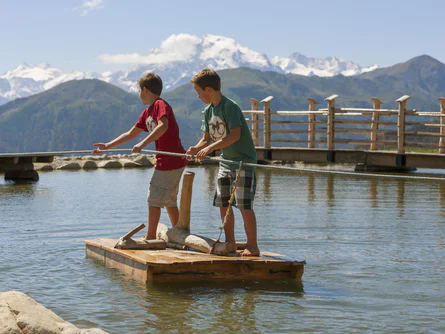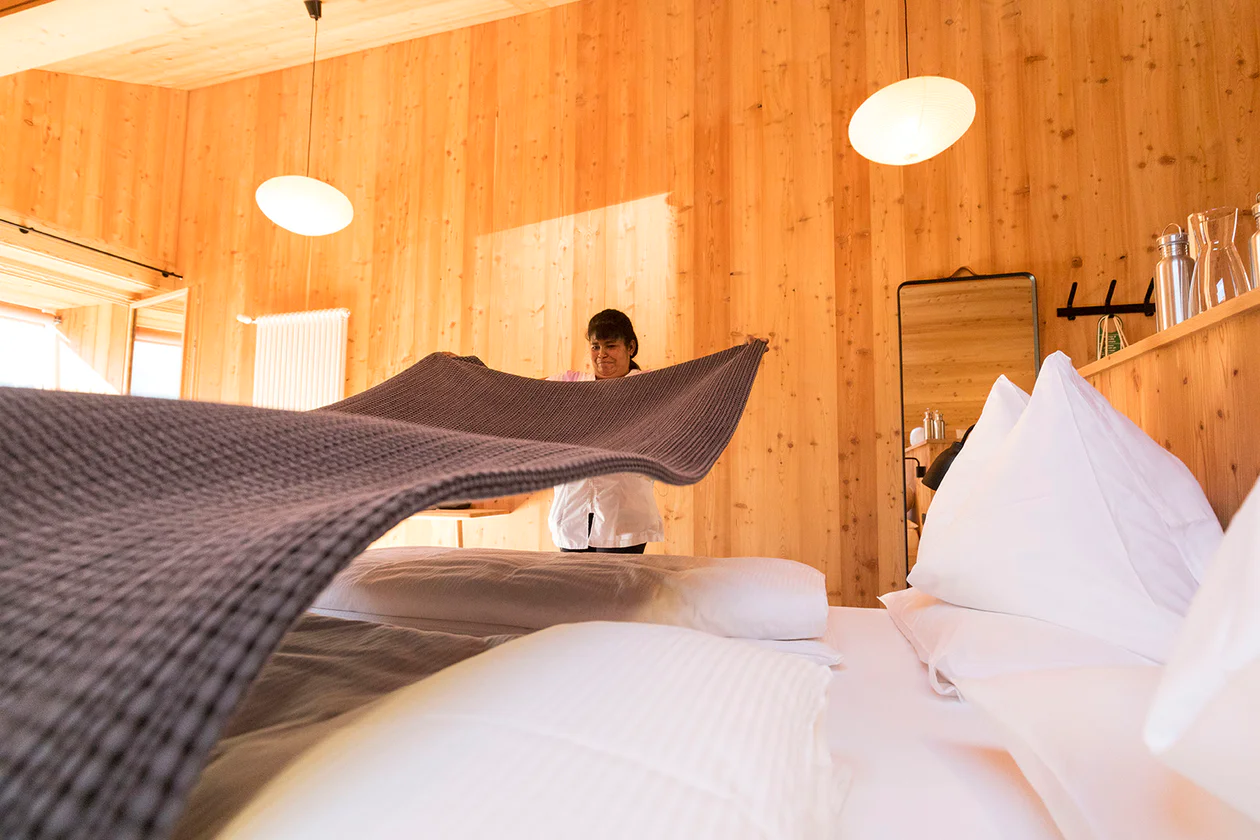An Adventure Playground for Children on Watles, the Hikers' Paradise
Amidst the expansive Watles hiking area, there is the 1500 m² Spielesee – an artificial lake for children, designed as an exciting adventure playground for little ones and families. Kids can play on the wooden rafts, hanging bridges, waterfalls and streams where they can try their hand at "gold panning" or exploring for minerals and other gems. Children love the long slide and the new Funballz, a water–walking-ball which kids can hop and run with along the surface of the water.
Wooden chaise-langue’s are also available and adults can unwind and enjoy the view from the platform, with its magnificent mountain panorama. Admissions are free of charge.






























